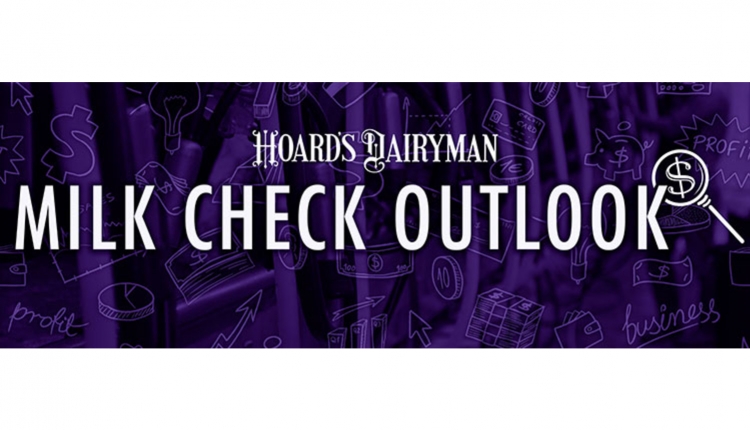The author is the senior dairy analyst for Terrain, a team of economists who provide expert analysis to the customers of American AgCredit, Farm Credit Services of America, and Frontier Farm Credit.

Dairy markets started 2025 well positioned for a strong year, but the landscape is fraught with uncertainties that will raise the level of volatility as we move throughout the rest of the year. Chief among those uncertainties is trade. Tuning out some of the noise and focusing on risk management and long-run planning will be key to navigating markets.
A mix of export outcomes
Cheese has been celebrated as the rising star in the U.S. dairy export portfolio. Cheese exports have been building momentum and are steadily rising. Mexico, in particular, has emerged as a major market for U.S. cheese, with exports more there than doubling since 2020.
The U.S. is priced competitively with the other major cheesemaking regions of the world, including Europe and Oceania. Typically, when U.S. cheese is priced at a discount to the rest of the world, it provides a strong opportunity for sales and a chance to lock in multi-month export contracts. But with uncertainty swirling, there may be less appetite for long-term contracts.
Meanwhile, milk powder exports, have experienced slower growth. Mexican imports of U.S. milk powder were down in 2024 compared to 2023, and January 2025 started flat with 2024 levels. Exports to key Asian markets have slid over the past few years, and that trend has not reversed so far this year.
Whey has started 2025 on a strong note, with exports to China up more than 50% year over year in January, but markets are showing signs of weakness ahead. Prices have been declining since the beginning of the year, but whether these lower prices will spur stronger demand is in doubt. The USDA’s Dairy Market News reports that domestic users are uninterested in prices above 50 cents after climbing to nearly 80 cents at the end of last year, and there is growing concern about international trading activity over the next few months.
Trade negotiations have captured headlines and are changing quickly. With the growing importance of exports to the U.S. dairy industry, the prospect of disrupting trade with some partners or breaking down barriers and expanding markets with others is adding heightened volatility to markets.
Solids values face issues
Closer to home, dairy’s commodity supply will be another factor to watch in the months ahead.
The new and expanding cheese manufacturing plants are ramping up, taking in more milk. Until now, much of the attention has been on whether we will have sufficient milk to fill the plants, and if we do, will the market be flooded with surplus cheese? So far, those factors seem reasonably balanced, but some of the by-products might be a different story.
Producing more cheese means we will be making more whey as well. The CME spot market price for dry whey started the year at 75 cents per pound but has fallen to 45 cents per pound in mid-March.
Whey prices are the input used to calculate the component value for other solids on milk checks, and a fall of this magnitude could lead to about a 45% drop in the other solids value.
Another component value that could come under pressure this year is fat. With milkfat levels continuing to climb in U.S. milk, there is plenty of cream on the market. Cream is usually plentiful this time of year, heading into the spring flush. But this year, butter churns can’t seem to keep up and are struggling to find enough capacity for steeply discounted cream.
We’ll likely see plenty of butter being put away in coolers for later in the year. Ample cold storage inventories could limit the upside potential of the butter market, which would in turn limit the upside potential for butterfat component values.

Price projections
My baseline price projections are for Class III milk to average $18.15 in the second quarter of 2025, though Q2 is where most of the volatility in futures markets is rearing its head so far. Markets appear to be pricing in significant risk to trade disruptions, but it remains too early to predict the ultimate outcome of trade negotiations.
For the second half of the year, I expect the Class III price to decline to $17.60. Part of that decline is due to the Federal Milk Marketing Order changes that will go into effect in June. Class IV prices are projected to average $18.90 through the remainder of the year.
I expect component prices to converge somewhat compared with 2024, with protein values improving modestly but fat values falling somewhat. Protein values have the biggest potential for volatility tied to the uncertainty around cheese exports.
Luckily, feed costs are projected to remain relatively low, providing some buffer to margins. Still, there will be ups and downs, and there could be challenging months.
Risk management and a focus on the long run will be key to navigating 2025 successfully. Alongside volatility, there will be opportunities for growth and adaptation. New manufacturing plant investments reflect long-term optimism in dairy demand, and a focus in participating in these evolving markets will be more beneficial than getting caught up in the near-term ups and downs.








